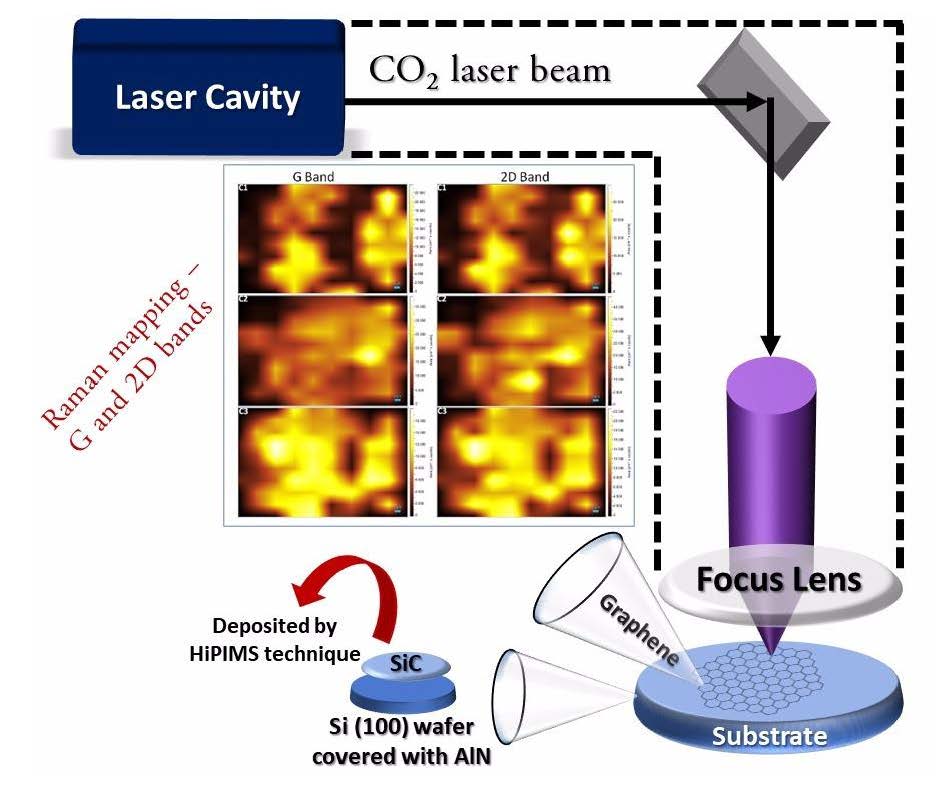This article reports a novel and efficient method to synthesize graphene by thermal decomposition process. In this method, silicon carbide (SiC) thin films grown on Si(100) wafers with an AlN buffer layer were used as substrates. A CO2 laser beam heating without vacuum or controlled atmosphere was applied for SiC thermal decomposition. The physical, chemical, morphological, and electrical properties of the laser-produced graphene were investigated for different laser energy densities. The results demonstrate that graphene was produced in form of small islands with quality, density and properties depending on the applied laser energy density. Furthermore, the produced graphene exhibits a sheet resistance characteristic similar to graphene grown on mono-crystalline SiC wafer, which indicates its potential for electronic device applications.

